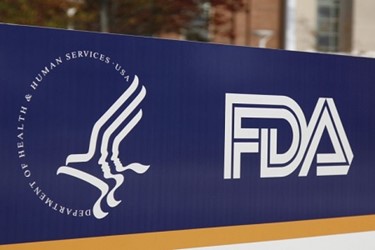FDA's New Guidance On CMC For Gene Therapy INDs — What You Need To Know
By Kate Cook and Samantha Eakes, Greenleaf Health

The FDA defines human gene therapy products as all products that mediate their effects by transcription or translation of transferred genetic material or by specifically altering host (human) genetic sequences. Some examples of gene therapy products include nucleic acids, genetically modified microorganisms (e.g., viruses, bacteria, fungi), engineered site-specific nucleases used for human genome editing, and ex vivo genetically modified human cells. Gene therapy products meet the definition of “biological product” in section 351(i) of the Public Health Service (PHS) Act (42 U.S.C. 262(i)) when such products are applicable to the prevention, treatment, or cure of a disease or condition of human beings.
Although the journal Science reports that the first gene therapy clinical trial was conducted in 1990,1 the FDA only approved the first gene therapy product on August 30, 2017. Two more approvals quickly followed, reflecting a suddenly rapid advancement in this field. On July 11, 2018, the FDA issued for public comment six draft guidance documents intended to serve as part of a modern, comprehensive framework for how the Center for Biological Evaluation and Research (CBER) will help advance the field of gene therapy.
This six-part article series will summarize each of the draft guidance documents, starting with Chemistry, Manufacturing, and Control (CMC) Information for Human Gene Therapy Investigational New Drug Applications (INDs).
Overview
As FDA Commissioner Scott Gottlieb noted in his announcement of the new gene therapy guidances, some of the more challenging issues for gene therapy product development relate to product manufacturing and quality. The new CMC-focused draft guidance is intended to explain how FDA approaches certain aspects of gene therapy products, and to help sponsors and the FDA meet the unique challenges presented by these new platforms. When finalized, this guidance will replace FDA’s existing guidance, issued in 2008, titled Content and Review of Chemistry, Manufacturing, and Control (CMC) Information for Human Gene Therapy Investigational New Drug Applications (INDs).
The guidance applies to human gene therapies and to combination products that contain a human gene therapy in combination with a drug or device. The draft guidance provides sponsors with recommendations on how to provide sufficient CMC information to assure safety, identity, quality, purity, and strength/potency of investigational gene therapy products.
The FDA may place an IND on clinical hold if the IND does not contain sufficient CMC information to support assessment of the risks to subjects in the proposed studies (21 CFR 312.42(b)(1)(iv)). By providing CMC information in an IND, the sponsor commits to perform the manufacturing and testing of the investigational product as described in the submission. The requirement for CMC review during all phases of development helps to ensure product safety and manufacturing control. As clinical development proceeds and additional product knowledge and manufacturing experience accrue, sponsors should submit information amendments to modify the CMC information already submitted in the IND (21 CFR 312.23(a)(7)(iii)). If a manufacturing change could affect product safety, identity, quality, purity, potency, or stability, the sponsor should submit the manufacturing change prior to implementation.
The draft guidance is organized to follow the structure of the FDA guidance on the Common Technical Document (CTD). Beginning May 5, 2018, commercial IND submissions were required to be submitted in electronic CTD (eCTD) format, subject to limited exceptions. Sponsors are not required to complete all CTD sections in the original IND submission. The amount of CMC information required to be submitted in the original IND submission depends on the phase of investigation (21 CFR 312.23(a)(7)(i)) and the scope of the clinical investigation proposed.
Module 1: Administrative Information
Module 1 should contain administrative information, including administrative documents, product labels, environmental analyses, and references to previously submitted information. The cover letter for the submission should include a brief explanation of the submission and its contents. When amendments are submitted to an IND for manufacturing changes, the cover letter should clearly describe the purpose of the amendment and should highlight the proposed changes. For amendments containing numerous or significant changes, the FDA recommends that sponsors include a “Reviewer’s Guide” and that sponsors allow sufficient lead time (e.g., 30 days) for FDA review before the release of a new lot of clinical trial material.
Module 2: Summary Of Quality Information
Module 2 should contain a summary of the quality information that will be presented in greater detail in Module 3. Sponsors should provide a general introduction to the gene therapy product under investigation, including a description of its active ingredient(s), mode of action, and proposed clinical use. The summary should include an overview of the manufacturing process, controls in place to ensure product quality, and general information regarding the qualification of components and starting materials. Sponsors should also describe the composition of the drug substance (DS) and final drug product (DP), and indicate if the DS is formulated into the DP for administration or if the DS is used for ex vivo genetic modification of cells.
The draft guidance states that FDA recognizes that distinguishing the DS from the DP may be difficult for some gene therapy products due to the complex nature of the manufacturing processes. Some gene therapy products may not have a defined DS, while others may consist of two or more different drug substances that are combined to make the DP. The guidance does not provide advice on distinguishing the DS from the DP but recommends that sponsors explain in Module 2 how the sponsor identified and distinguished between the two.
Since proper control of the finished DP is critical, Module 2 should include a description of how the product will be shipped to, received, and handled at the clinical site to ensure safety, product quality, and stability. The sponsor should address expiration date/time (if applicable), describe the chain of custody from the manufacturer to the site of administration, include information for product handling at the clinical site prior to administration (such as thawing, washing, or the addition of diluent or adjuvant; loading into a delivery device; and transport to the bedside) and summarize information on product stability prior to and during administration (e.g., in-device hold times and temperatures).
Module 3: Manufacturing Process And Control Information
The draft guidance provides the most extensive recommendations for Module 3. The sections in this module address information to be submitted concerning both the DS and the DP.
Information about the DS should include:
- General Information
- Nomenclature
- Molecular structure and/or cellular components, including information about vectors
- General properties, including the biological activity and proposed mechanisms of action
- DS Manufacture
- Identification of manufacturers
- Description of manufacturing process and process controls, including batch and scale, manufacturing process, cell culture, vector production, genetically modified cell production, irradiated cells, and filling, storage, and shipping
- Control of materials, including information about reagents, any bovine or porcine materials, murine or monoclonal antibodies, human source materials such as albumin, autologous and allogeneic cells, and master and working cell banks
- Control of critical steps and intermediates
- Process validation and/or evaluation
- Manufacturing process development
- DS Characterization
- Elucidation of structure and other characteristics
- Impurities (both process- and product-related)
- Control of DS
- Specifications
- Analytical procedures, including safety testing and testing of replication competent viruses
- Validation of analytical procedures
- Batch analysis
- Justification of specifications
- Reference standards or materials
- Container closure system
- Stability
Information about the DP should include:
- DP Description and Composition, including a description of the dosage form and a list of all of its components
- Pharmaceutical Development, addressing the development studies conducted to establish that the product formulation, manufacturing process, container closure system, microbiological attributes, and instructions for use are appropriate for the stage of clinical development
- DP Manufacture
- Identification of manufacturers
- Batch formula
- Description of manufacturing process and process controls
- Controls of critical steps and intermediates
- Process validation and/or evaluation
- Control of Excipients
- Specifications
- Analytical procedures
- Validation of analytical procedures
- Justification of specifications
- Excipients of human or animal origin
- Novel excipients
- Control of DP
- Specifications
- Analytical procedures, including analyses of sterility, product identity, purity, potency, viability, cell number, or dose
- Validation of analytical procedures
- Batch analyses
- Characterization of impurities
- Justification of specifications
- Reference standards or materials
- Container closure system
- Stability
Appendices
In addition, the draft guidance advises sponsors to submit information on facilities and equipment and adventitious agents safety evaluation in appendices to the eCTD.
The FDA will accept comments on the draft guidance through October 10, 2018. You can submit comments electronically at https://www.regulations.gov/.
The next article in this series summarizes the draft guidance Testing of Retroviral Vector-Based Gene Therapy Products for Replication Competent Retrovirus (RCR) during Product Manufacture and Patient Follow-up.
References:
- Blaese et al. T Lymphocyte-Directed Gene Therapy for ADA− SCID: Initial Trial Results After 4 Years, Science 20 Oct 1995: Vol. 270, Issue 5235, pp. 475-480 DOI: 10.1126/science.270.5235.475
About The Authors:
 Kate Cook is executive VP of drug and biological products at Greenleaf Health, Inc. She joined Greenleaf after a long career at the FDA, including 15 years in the Office of Chief Counsel, five years in the Office of the Center Director at the FDA’s Center for Biologics Evaluation and Research, and one and a half as associate director for regulations and policy at the FDA’s Center for Devices and Radiological Health. You can contact her at kate.cook@greenleafhealthllc.com.
Kate Cook is executive VP of drug and biological products at Greenleaf Health, Inc. She joined Greenleaf after a long career at the FDA, including 15 years in the Office of Chief Counsel, five years in the Office of the Center Director at the FDA’s Center for Biologics Evaluation and Research, and one and a half as associate director for regulations and policy at the FDA’s Center for Devices and Radiological Health. You can contact her at kate.cook@greenleafhealthllc.com.
 Samantha Eakes is senior manager of regulatory affairs at Greenleaf Health, Inc. She specializes in developing communications and advocacy strategies, conducting research, and providing regulatory insight. She recently received her master’s in public health (MPH) from Boston University. You can contact her at sam.eakes@greenleafhealthllc.com.
Samantha Eakes is senior manager of regulatory affairs at Greenleaf Health, Inc. She specializes in developing communications and advocacy strategies, conducting research, and providing regulatory insight. She recently received her master’s in public health (MPH) from Boston University. You can contact her at sam.eakes@greenleafhealthllc.com.
